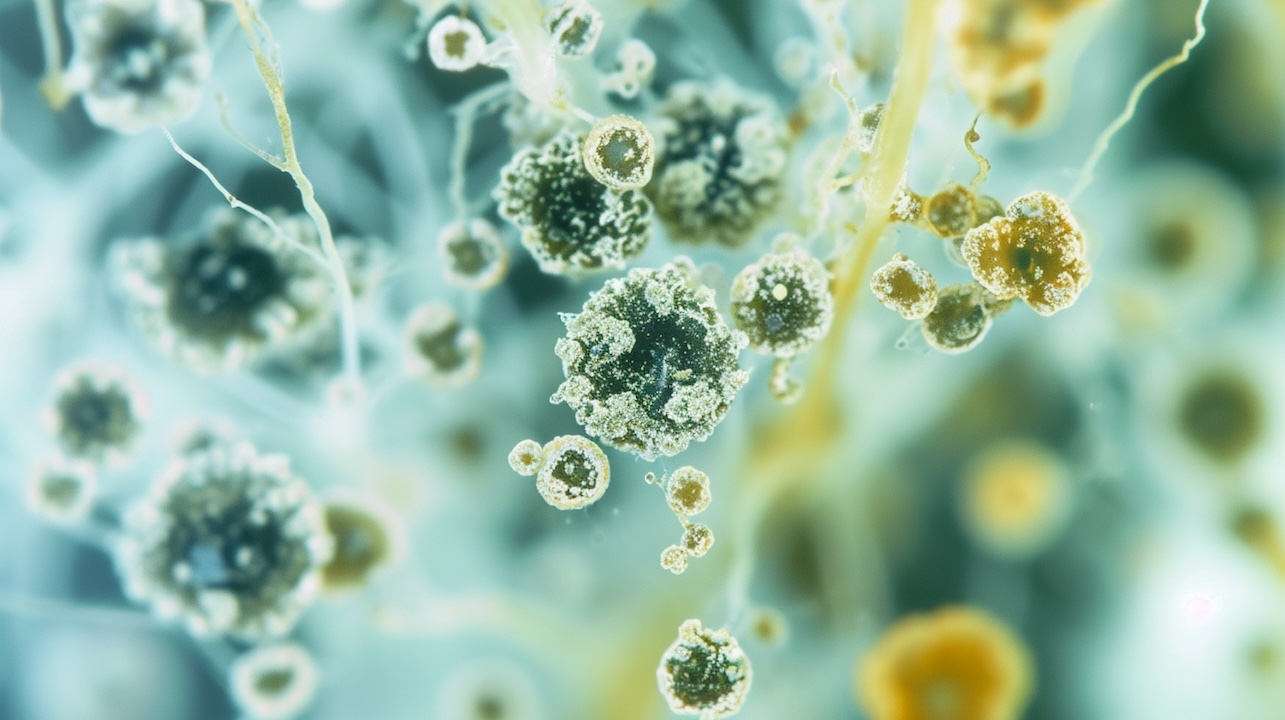Mold is more than just an unsightly nuisance in your home—it can also pose a risk to your health, depending on the type and color. Some mold varieties are relatively harmless, while others can lead to serious respiratory issues or infections. So, is the color of mold a clue to how dangerous it is?
In this blog, we’ll break down the different mold colors you might encounter, where they’re commonly found, and whether you should be worried about them. By the end of this post, you’ll have a clear understanding of which molds are more hazardous and how to handle them effectively.
What Is Mold, Anyway?
Before diving into the specifics of mold colors, let’s get a quick refresher on what mold is. Mold is a type of fungus that grows in damp, warm environments, feeding on organic matter. It thrives in places with high humidity or moisture, such as bathrooms, basements, kitchens, or areas with water damage. While most molds aren’t lethal, prolonged exposure can lead to various health issues, especially for people with allergies, asthma, or weakened immune systems.
The Mold Color Guide: What Each Color Means for Your Health
Let’s break down the most common mold colors you’ll likely encounter and what they mean for your home and health.
1. Black Mold: The Infamous Toxic Mold
- Appearance: Dark greenish-black or completely black.
- Common Locations: Primarily found on drywall that has been wet directly such as basements, bathrooms, kitchens, around windows, ceilings under water leaks.
- Health Impact: Black mold, particularly Stachybotrys chartarum, is notorious for being highly toxic. It can lead to severe respiratory problems, including coughing, sneezing, wheezing, and even chronic headaches. Those with asthma or respiratory conditions should be especially wary.
Black mold is probably the most feared mold type—and for good reason. It releases mycotoxins, which can cause serious health complications, particularly in individuals with compromised immune systems. Long-term exposure may even result in memory issues or chronic fatigue. If you spot black mold, it’s time to take action immediately.
2. Red Mold: A Sneaky but Harmful Visitor
- Appearance: Ranges from reddish-orange to reddish-brown.
- Common Locations: Bathrooms, kitchens, basements, and on food.
- Health Impact: While red mold may not be as infamous as black mold, it can still cause respiratory issues and infections, particularly for people with allergies or weakened immune systems. Prolonged exposure can also lead to skin irritations.
Red mold tends to grow in damp areas but can also develop on spoiled food. If you find red mold in your living spaces, you’ll want to remove it promptly, as it can still cause health problems, particularly for those with asthma or allergic reactions.
3. Green Mold: Common but Still Concerning
- Appearance: Varies from dark green to lighter green or greenish-blue.
- Common Locations: Often found on food, walls, and damp surfaces in kitchens and bathrooms.
- Health Impact: Green mold can cause allergic reactions, respiratory issues, and, in rare cases, infections. It’s not typically as toxic as black mold, but that doesn’t mean it’s harmless.
Green mold is often seen growing on food, but when found on your walls or other surfaces, it can still trigger respiratory symptoms. Be sure to clean it up quickly and consider addressing any moisture issues in the affected area to prevent regrowth.
4. Pink Mold: Pretty but Mostly Cosmetic
- Appearance: Typically pink or salmon-colored, often slimy.
- Common Locations: Bathrooms, around showers, tubs, and sinks.
- Health Impact: Pink mold is usually more of a cosmetic issue than a serious health risk, but it can cause urinary tract infections, respiratory problems, and eye infections in vulnerable people.
Pink mold isn’t technically a mold but rather a type of bacteria known as Serratia marcescens. While it’s not as dangerous as black mold, it’s still worth cleaning up as it can lead to minor infections, particularly in people with weakened immune systems.
5. Orange Mold: More Annoying Than Dangerous
- Appearance: Bright orange to yellowish-orange.
- Common Locations: Often found on decaying organic matter, like wood, and in warm, damp environments.
- Health Impact: Generally less harmful than other molds but can still cause respiratory irritation and mild allergic reactions.
Orange mold is usually found outside on wood or decaying plants, but it can also make its way indoors in very humid environments. While it’s not highly dangerous, it’s still best to clean it up to avoid potential irritation or allergic reactions.
So, Should You Be More Worried About Certain Mold Colors?
Yes, you should. While not all molds are equally harmful, certain types—particularly black mold—pose a significant health risk, especially for individuals with respiratory conditions or weakened immune systems. Here’s a quick recap of what to watch for:
- Most Dangerous: Black mold (Stachybotrys chartarum) due to its mycotoxin production and severe respiratory impacts.
- Moderately Harmful: Red, green, and pink molds can cause allergic reactions, respiratory issues, and infections in sensitive individuals.
- Least Harmful: Orange mold, though mostly a cosmetic nuisance, can still cause mild irritation.
How to Handle Mold Safely
If you encounter mold in your home, it’s crucial to clean it up quickly and safely. Here are some steps you can follow:
- Wear Protective Gear: Always wear gloves, goggles, and a mask to avoid inhaling spores.
- Clean with Detergent: Scrub the mold-infested surface with a detergent solution and a scrub brush. Avoid using bleach, as it can be harmful and may not be effective on porous surfaces. For more delicate surfaces, vinegar is a good alternative.
- Fix the Source of Moisture: Mold thrives in damp conditions, so it’s essential to address any leaks or humidity issues.
- Consider Professional Help: If you have a large mold infestation or suspect black mold, it’s best to call in a professional to handle the cleanup safely. It’s important to remember that mold is dangerous, and you should only attempt to clean small infestations. As a matter of fact, the Environmental Protection Agency highly recommends professional help for any contamination that covers an area bigger than 10 square feet.
FAQs
Q: Can mold exposure cause long-term health problems?
A: Yes, especially with toxic molds like black mold, long-term exposure can lead to chronic respiratory problems, fatigue, and neurological issues.
Q: How can I prevent mold from growing in my home?
A: Keep humidity levels low, fix leaks immediately, and ensure proper ventilation in high-moisture areas like bathrooms and kitchens.
Q: Is it safe to clean mold myself?
A: Areas less than 10 square feet can be safely cleaned with proper protective gear, but for large infestations or toxic black mold, it’s best to call a professional.
Wrapping Up
Mold color can be a useful indicator of its potential danger, but all molds should be treated seriously to maintain a healthy environment. Black mold poses the greatest risk, while other molds like red, green, and orange can still cause health issues for sensitive individuals. The key is to identify, clean up, and prevent mold growth as soon as possible.
By staying informed, you can keep your home mold-free and safeguard your health. Now, grab your gloves, check for leaks, and say goodbye to that pesky mold!








